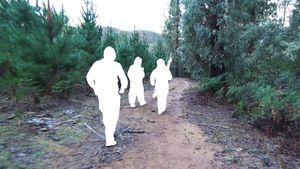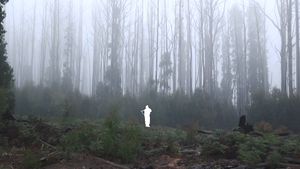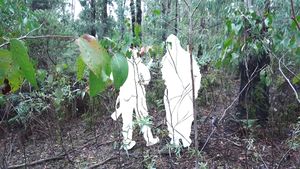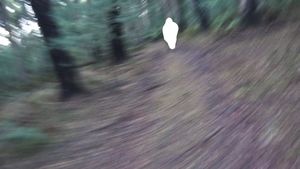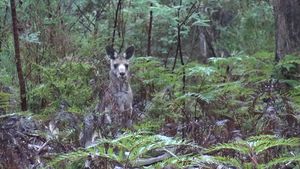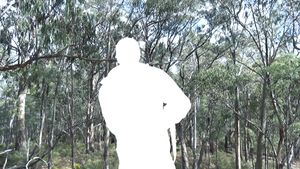2016 Was immer wir sind
From Animation Luzern Wiki
Contents
- 1 Titel / Title / Titre
- 2 Synopsis / Summary / Résumé
- 3 Realisator / Director / Réalisateur
- 4 Produktion / Production
- 5 Bilder / Stills / Images
- 6 Credits
- 7 Technische Angaben / Technical information / Informations techniques
- 8 Weitere Informationen / More information / Informations additionnelles
- 9 Verkauf des Films / Sale of film / Vente du film
- 10 Vertrieb / Distribution
- 11 Präsentiert an anderen Festivals / Preseted at other festivals / Présentations antérieures à d’autres festivals
Titel / Title / Titre
- DE: Was immer wir sind.
- EN: Whatever we are.
- FR: Quoi que nous soyons.
Synopsis / Summary / Résumé
- DE: Der Kurzfilm basiert auf einem von der Regisseurin initiierten Ausflug, der unerwartet zu einem persönlich belastenden Erlebnis wurde. Der Film, welcher Bild über Bild bearbeitet wurde, thematisiert ihren persönlichen Konflikt zwischen der Position als Kamerafrau und der des moralisch handelnden Subjektes innerhalb der Gruppe. Mit den weissen Flächen verlieren die vier Charaktere ihre Individualität. Alle Teilhaber, wie auch die Kamera und Gewehre, werden gleich gewichtet und erhalten dadurch die selbe Verantwortung und Bedeutung.
- EN: The shortfilm is based on a trip to the Australian woods which the director initiated. She joined three hunters and recorded an unexpected and personally afflicting experience. The film, which was traced over footage frame by frame, is about group dynamics. Furthermore it deals with the conflict between the two positions she experienced. One being the person behind the camera trying to catch reality without influencing it, the other as being part of that same reality. Through the white planes the four characters lose their individuality. All participants, as well as the camera and guns are treated the same way and therefore obtain the same responsibility and meaning.
- FR: Ce film court est basé sur une expérience vécue lors d’une excursion de la réalisatrice dans les forêts australiennes. Elle s’est jointe à un groupe de trois chasseurs et a vécu une expérience personnelle qui s’est transformée en un événement inattendu et traumatisant pour elle. Le film a été traité image par image. Il a trait à la dynamique du groupe et représente le conflit entre les deux rôles qu’elle devait jouer: d’un côté la personne derrière la caméra essayant de capter la réalité sans l’influencer, de l’autre la personne partie prenante de cette réalité. Les silhouettes blanches indiquent que les quatre acteurs perdent leur individualité. Tous les participants, ainsi que la caméra et les armes, sont placés au même niveau et, de ce fait, ont également la même responsabilité et la même signification.
Realisator / Director / Réalisateur
Produktion / Production
Hochschule Luzern - Design & Kunst Studienrichtung Animation,
Bilder / Stills / Images
Credits
- Kamera/Camera/Caméra: Dahlia Loher
- Konzept/Concept: Dahlia Loher
- Schnitt/Editing/Montage: Dahlia Loher
- Rotoskopie/Rotoscoping/Rotoscopie: Dahlia Loher
- Unterstützung Rotoskopie/Additional Rotoscoping/Rotoscopie additionnelle: Remo Scherrer, Nicolle Bussien, Shirine Salvade, Charlotte Friedli
- Colorgrading: Dahlia Loher
- Untertitel/Subtitles/Sous-titres: Dahlia Loher, Dustin Rees, Marc Locher, Silvain Monney
- Musik/Music/Musique: Luca Magni, ZHdK Studiengang Filmmusik, Leitung André Bellmont
- Sounddesign: Luca Magni, ZHdK Studiengang Filmmusik, Leitung André Bellmont
- Soundmischung/Soundmix/Mixage sonore: Christof Steinmann
- Mentor/Mentorship/Mentorat: François Chalet, Anaïs Voirol
- Mentor Theoriearbeit/Mentor Thesis/ Mentor travail théorique: Christian Gasser
- Mentor Projektentwicklung/Mentor project develoment/Mentor développement de projet: Paul Bush
- Produktionssupport/Productionsupport/Support de production: Jean First, Ignacio Duelo, Jeroen Visser
- Assistenz: Lea Hunziker
- Sekretariat: Bettina Ganassi
- Produktion: Hochschule Luzern - Design & Kunst Studienrichtung Animation, Jürgen Haas
- Ausführender Produzent: Gerd Gockell
- Danke Danke an: Kelsey McGowan, Elsie Baker, Alice Britschgi, Lea Gasser, Liza Ingenhoest, Haidi Marburger, Claudia Schildknecht, Stephanie Thalmann, Noah Demirci, Raphael Kleeb, Vivianne Tanner, Raphaela Bellotto, Etienne Kompis, Lalita Brunner, Katrin Jucker, Lukas Vorkauf, Nathalie Wehrli, Vera Lang, Nina Sörés, Erich Scheidle, Jan Janutin, Daria Meienhofer, Pascal Scherrer, Marc Locher, Christine Locher, Lukas Locher, Monique Locher
Technische Angaben / Technical information / Informations techniques
- Herkunftsland/Country of origin/Pays d'origine: Schweiz / Switzerland / Suisse
- Produktionsjahr/Year/Année: 2016
- Dauer/Duration/Durée: 4’37“
- Verfahren/Process/Processus: Farbe / Color / Couleur
- Technik/Technic/Technique: Echtfilm + Rotoskopie / Live action + Rotoscoping / Prise de vue réelle + Rotoscopie
- Grösse/Size/Taille: 1920x1080
- Aspekt/Aspect/Aspect: 16:9
- Format: DCP / File
- Dialog/Dialogue: EN
- Untertitel/Subtitles/Sous-titres: EN, DE, FR
- Ton/Sound/Son: 5.1 Surround / Stereo
- ISAN: 0000-0004-44B8-0000-Q-0000-0000-X
- Musikliste/Music Cue Sheet:
| Kurzfilm | Titel des Werkes | UrheberIn | Album o. Jahr | Dauer (hh:mm:ss) | Label | Art des Werks |
| Kurzfilm | Was immer wir sind. | Luca Magni | 2016 | 00:04:37 | - | Auftragswerk |
Weitere Informationen / More information / Informations additionnelles
- Schule/School/Ecole: Hochschule Luzern - Design & Kunst http://www.hslu.ch
- Modul/Module: BA-Abschluss
- Dozent/Professor/Professeur: Jürgen Haas
- Mentor/Mentorship/Mentorat: François Chalet, Anaïs Voirol
- Software: TVPaint / PremierePro / AfterEffects / Photoshop / ProTools
- Zielgruppe/Target audience/Public ciblé: Jugendliche, Erwachsene
- Altersbegrenzung/Age limit/Limite d’âge: 16+
- Genre: Dokumentarfilm / Documentary / Documentaire + Arthouse
Verkauf des Films / Sale of film / Vente du film
Vertrieb / Distribution

